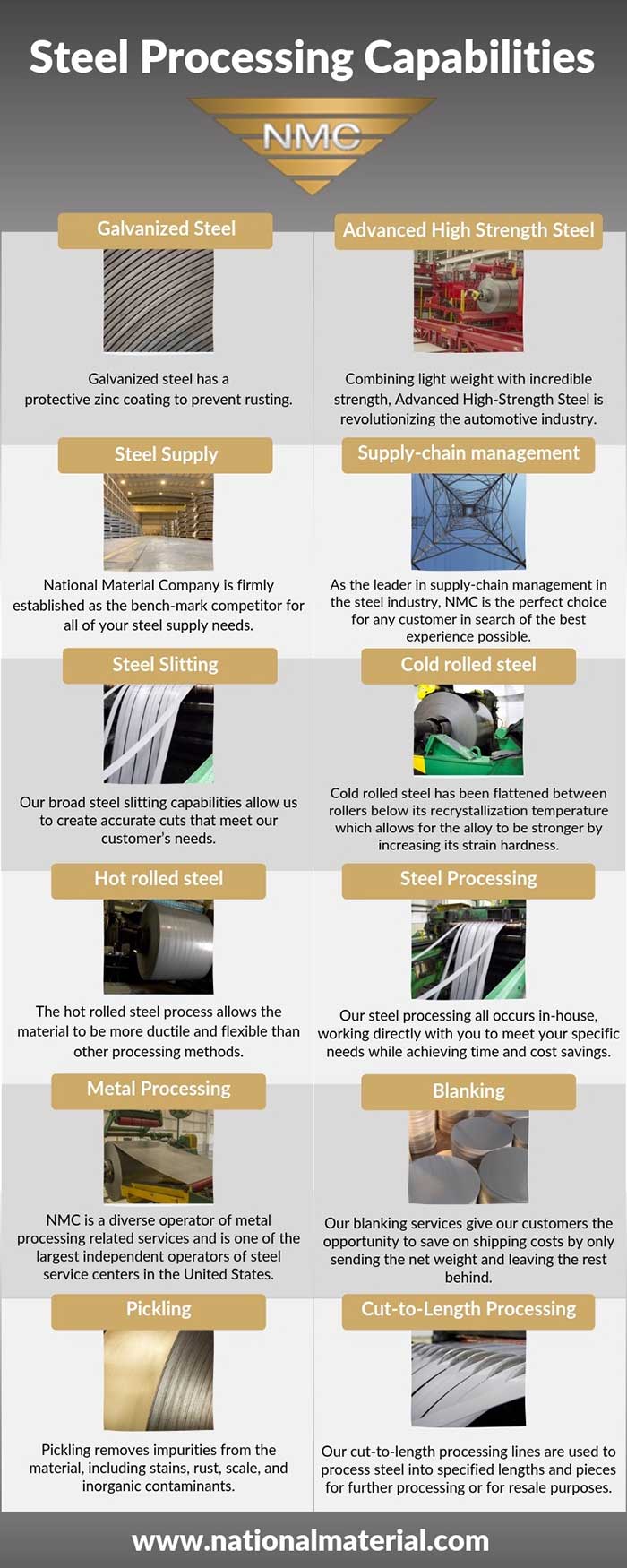Steel Processing at National Galvanizing
Today, modern chemists must face the same problem that one element posed to the Egyptians thatshould have destroyed the pyramids. It’s that ubiquitous element that threatens everything made by humans: water. As frost formed inside the stone structure at night and expanded with the morning, slow cumulative damage should have been done to the pyramids. For many years, this mystery defied the explanation of archeologists, however was eventually solved. A detailed study concluded that ancient Egyptians relied on technology to defy the power of water: they had invented a primitive form of cement.
Water threatens the integrity of modern structures. Steel, the very backbone of modern civilization, rusts when it comes into contact with water. Technology has been the answer for modern man, just as it was for the pyramid builders. Various techniques have been developed to prevent steel from corroding. One of the most sought after by leading industries is galvanizing. Both long-lasting and cost-friendly, galvanized steel can resist rust for 70 years or more. The characteristics of the environment where it is used, and the thickness of the protective coat can influence the lifespan of the steel. Today, a sophisticated process known as hot-dipping is used to galvanize steel. Essentially, galvanizing adds a zinc-iron coating to the metal, forming a protective layer. The multi-step process described below gives galvanized steel its protective qualities:
1) The steel is cleaned in a degreasing solution.
2) After being cleaned, the steel is pickled by running through various tanks containing hot sulfuric acid.
3) The steel is then fluxed in an aqueous solution (typically zinc-ammonium chloride).
4) After the flux, the steel is galvanized through immersion in a vat of molten zinc.
5) Afterward, the steel is inspected for consistency and a complete coating.
Galvanized steel has a low, initial cost, and no need for maintenance. It also provides other important advantages:
• Rust resistance: The iron elements in steel are incredibly prone to rusting, but the addition of zinc acts as a protective buffer between the steel and any moisture or oxygen.
• Easy inspection: It is easy to tell how strong a galvanized coating is just by looking at it. There are also quick stress tests that can determine how thick the zinc coating is.
• Sacrificial anode: This ensures that any damaged steel is protected by the surrounding zinc coating. It does not matter if the steel section is completely exposed; the zinc will still corrode first.
• Longer life: With galvanization, a piece of industrial steel is expected to last 70 years in average environments and can last over 20 years with severe water exposure. No maintenance required.
Galvanization is part of a larger framework in steel preparation. Clients can benefit through facilities that can apply various processes to steel including hot-dipped galvanizing. That’s why National Galvanizing’s state-of-the-art facility enables pickling, galvanizing, galvannealing, and slitting, all in one location. As a joint venture between National Material L.P. and Heidtman Steel, National Galvanizing has an unparalleled structure for quality, high-speed supply that serves the automotive, heavy truck, agricultural, garage door hardware, and HVAC industries, among others.
NMLP […]




